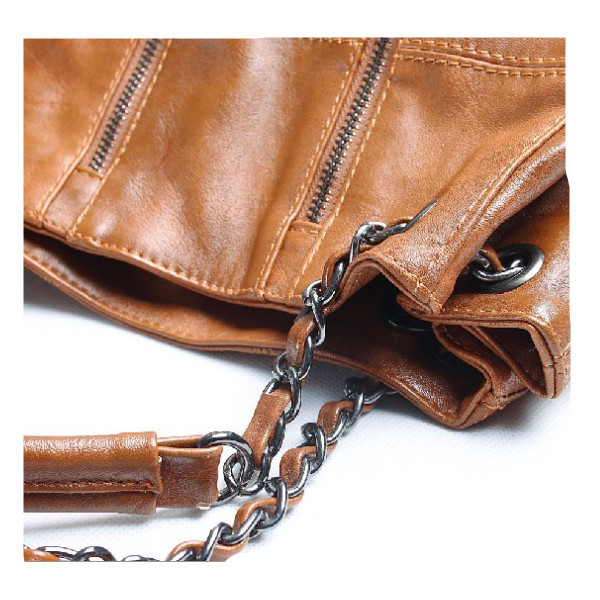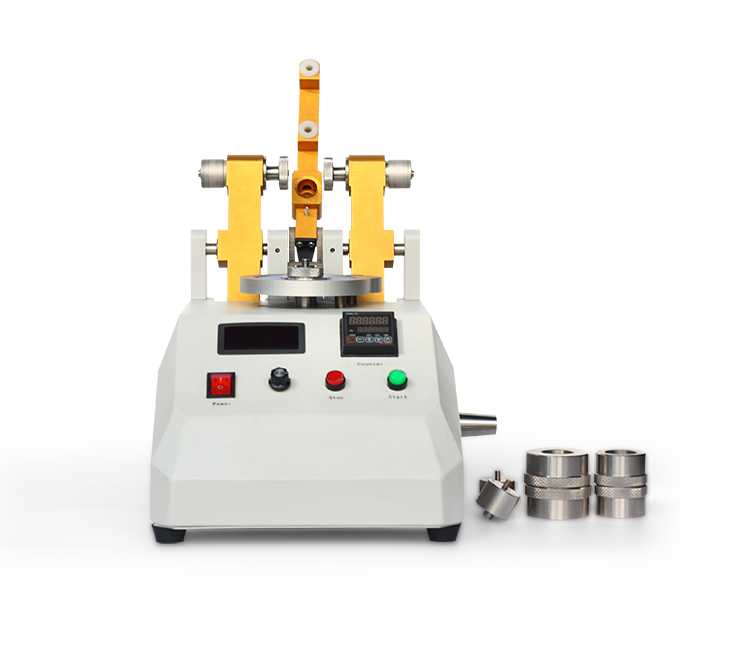The 3 most common leather wear resistance test methods
For leather abrasion resistance test method, there are three test methods: STROLL abrasion resistance method, TABER abrasion resistance method and Martindale abrasion resistance method, etc.
1. Martindale abrasion method
Martindale abrasion resistance method is often used in the abrasion resistance test and pilling evaluation of textiles, China's national standard GB/T3903.16-2008 "Footwear test method for upper, lining and insole abrasion resistance" provides for the test method of using Martindale method to test the upper of shoes, and it is also applicable to the test of abrasion resistance of automotive leather.
Using the Martindale abrasion method, the specimen is rubbed with standard friction fabric under constant pressure. The relative motion between the rubbing fabric and the specimen is carried out by the Lissajous pattern, generating friction in all directions. The degree of damage to the specimen is evaluated after completing the required number of rubs.

In operation, a piece of polyurethane foam with a thickness of (3±1) mm and a density of (30±3) kg/m3 is padded flat on the back of the specimen, and the specimen is fixed to the grinding head with a clamping ring, then the table felt is placed on the grinding table, then the friction fabric is placed on the table felt, and a weight generating (2±0.2) kPa pressure is placed on the friction fabric, and then the friction fabric is fixed. Finally, the abrasive head is mounted on the abrasion testing machine and a pressure of (12±0.2)kPa is applied to the abrasive head, and the instrument is started and tested according to the number of rotations set by the counter. After the test, remove the specimen, check and record the abrasion of the specimen, and use the gray sample card to evaluate the color change in the test area according to GB/T 250-2008 "Textile Color Fastness Test: Gray Sample Card for Evaluating Color Change".
2. STROLL abrasion resistance method
According to ASTM D 3886-1999 "Standard testmethod for abrasion resistance of textile fabrics (inflated diaphragm apparatus)", the test principle of STROLL method is that the test specimen is placed on an inflatable rubber diaphragm with constant air pressure. The test principle of the STROLL method is that the test specimen is placed on an inflatable rubber diaphragm with constant air pressure and rubbed against the specimen using sandpaper with specified surface characteristics. After a specified number of rubs, the specimen is evaluated visually for wear and tear.
Procedure: The specimen is placed on the rubber diaphragm in a flat position and the abrasive paper is placed on the abrasive plate with the contact tip of the abrasive paper attached flush with the surface of the abrasive paper. Then apply 28 kPa of air pressure below the diaphragm and 454 g above the abrasive plate and make sure that the control of air pressure and the contact between the inflated sample and the loaded sandpaper are in a stable and balanced condition. Start the instrument and perform the test with the number of rotations set by the counter. After the test, remove the specimen, check and record the abrasion of the specimen and evaluate the color change in the test area with a gray sample card according to GB/T 250-2008 "Textile Color Fastness Test: Gray Sample Card for Determining Color Change".
3. TABER Abrasion Resistance Method
The American standard ASTM D 3884-2009 "Standard test method for abrasion resistance of textile fabrics (TABER apparatus)" provides for the TABER abrasion resistance method. The test principle of the TABER method is as follows: The sample is placed on a rotating platform, and the sample is worn by the rotating friction movement of two rolling friction wheels above it under a certain load. One friction wheel faces outward and the other friction wheel faces inward, forming a circular wear mark. After a specified number of rubbing cycles, the specimen is evaluated visually for wear.

Procedure: The specimen is fixed face up on the rotating platform and the selected grinding wheel is mounted on the support lever. After selecting a suitable load, lower the support lever so that the grinding wheel is in contact with the specimen surface, connect and turn on the dust extraction device. Start the instrument and perform the test according to the number of rotations set by the counter. After the test, remove the specimen, check and record the wear of the specimen and use the gray sample card according to GB/T 250-2008.
QINSUN is the world's leading TABER Abrasion Resistance Tester Suppliers, always take the customer first as our company's business purpose, constantly improve and enhance the quality of products and services, to provide users with more comprehensive instrument application of the overall solution, to dare to innovate and strive for the first spirit for you. We welcome customers who are interested in purchasing to call us or leave a message to get the latest quotation!
2022-05-24 10:19
- Related News
The importance of battery internal resistance testing in the battery manufacturi
Application and structural principle of high and low temperature test chamber
Application of Small Coating Machine in Polyimide Slurry
Principles and selection methods of laboratory incubators
Evaluation of Moisture Absorption and Rapid Drying Performance of Textiles by Na
Liquid Moisture Management Tester
Paper ring compression strength tester standards
